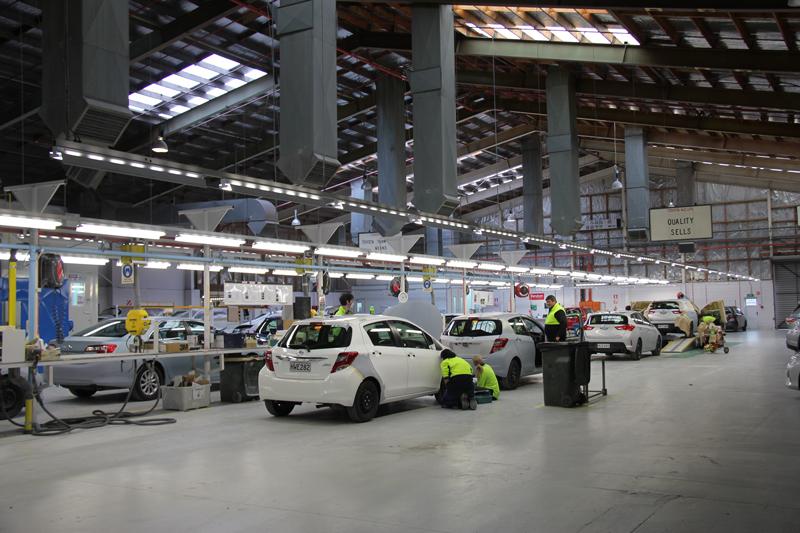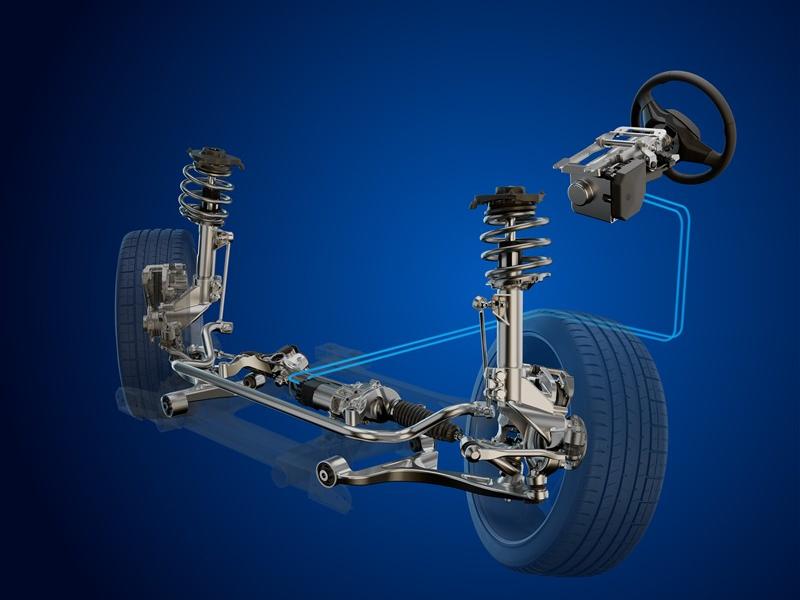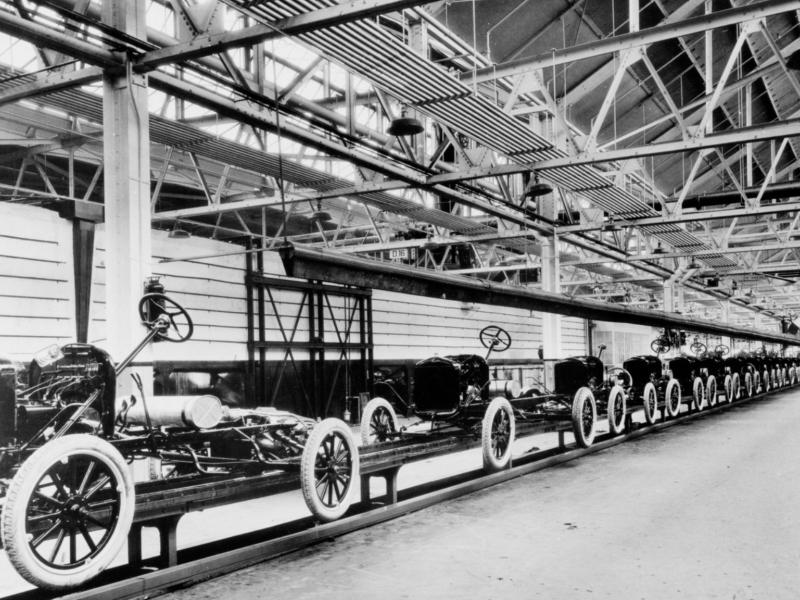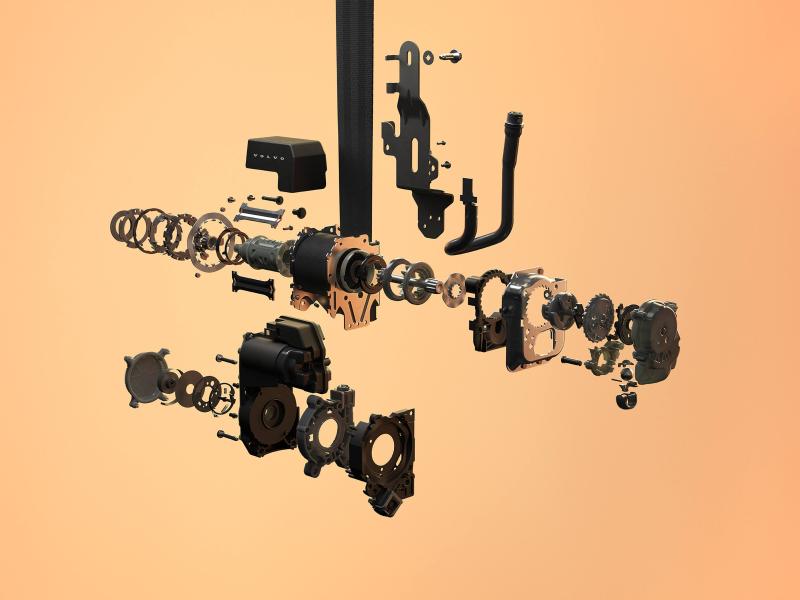Toyota’s Vehicle Operations plant at Thames, on the Coromandel, refurbishes as many as 3,400 used vehicles a year for Toyota’s Signature Class. John Oxley went to have a look at how the plant operates.
“We had some of the dealers here yesterday. Some of them were really surprised – they had the idea that we operated out of some backyard workshop.”
Peter Manning, manager of Toyota Vehicle Operations at Thames, laughed when he told me this. Most people don’t know that the Signature Class operation is based in a factory that once built cars by the thousands when New Zealand was a car-manufacturing country.
It’s built on a sprawling site tucked between two curves of the Waihou River – originally called Thames River after the London landmark by Captain James Cook – fronting onto the SH25 road which cuts through Thames on its way up the peninsula to Coromandel township, and flanked on the right by Thames’ historic Shortland Wharf, which dates back to 1868.
Toyota’s Thames operation was one of the last in the country to stop local assembly, but was the only one which continued to employ many of its staff members in a new enterprise, bringing used cars, both imported and New Zealand new, back to pristine condition to be sold under Toyota’s Signature Class used car programme.
So successful has the operation become that around 3,400 cars and SUVs a year are sent out of the main gate, while the Thames operation also fits after-market parts such as tow bars and bull bars to brand-new Toyota Hilux models, as well as other fit-out equipment.
The Thames plant dates back to 1964, when it was called Campbell Motors and assembled a variety of cars including Renault, Rambler, Peugeot, Fiat, Datsun and, from 1967, the Toyota Corolla.
Eventually Toyota bought the plant from its original owners, and in 1983 the Toyota Production System was introduced. Ten years later the plant won the inaugural NZ Quality Award.
Local assembly stopped in 1998, but it is important to note that the Toyota quality culture is still deeply embedded into the workers at Thames, and since becoming a refurbishment centre, it has received both ISO9001 and ISO14001 accreditation.
Vehicles refurbished are used cars imported from Japan (up to seven-years-old), and New Zealand-new cars from fleets and rentals (about five-years-old).
I last visited the Thames plant about five years ago, and was impressed then, although some of the features, such as the outdoor paint booths, seemed a bit quaint and antiquated.
Fast forward to 2016, and the plant has undergone numerous changes – not least of which is the new Signature Class logo at the entrance – including moving the paint booths inside the plant, and setting up a production line type operation where cars fresh from the transporter are fed in one end, and bright shiny new-looking cars emerge at the other end.
At the same time new equipment has been installed. “As we get more successful, we have been able to put in state-of-the-art equipment,” said Peter.
In addition to this, staff are encouraged to come up with ideas to cut costs or make their work easier.
Peter told me about one of these. As mentioned, part of Thames’ job is to install aftermarket accessories onto the latest Hilux. A couple of employees remembered an old machine which had been used to lift fuel tanks up during the assembly days. They also noted that fitting Hilux tow bars was a tedious back-breaking two-man operation, and so they resurrected the old tank-lifting machine, modified and updated it, and now fitting tow bars is a one-person job.
As we followed the route the cars take around the plant, Peter showed us several instances where employee interaction saved money. And everyone is made very much aware of what “the small stuff” costs, so there is little wastage. Even the hubcaps are cleaned up, re-sprayed, and used again!
Peter was at great pains to explain that the plant is very much process driven, with each process along the way mapped out and totally repeatable, and reminder lists at every checkpoint along the way. “Every process is a standard operation,” he said. “It’s part of the culture we took over from the assembly plant; in fact we operate much the same, but in a smaller way”.
This means a car can’t be passed along to the next station if they’ve found extra work to be done that’s not part of the norm – it has to be assessed, and even taken off the line if something unusual comes up.
This can result in, for instance, the car being sent off to outside repairers for additional panel beating, or a glass expert might visit the factory to do the work. And if there are parts needed which aren’t in stock, the cars are also side-lined until the parts arrive, ensuring the production line is not slowed down.
Each step along the way is closely monitored using the Toyota Vehicle Tracking System, and every job is costed out per vehicle against a budget. Even the paint used on each vehicle is weighed and costed!
One phenomenon is that as time goes on, many of the old staff are retiring and new staff has to be recruited – but Peter is onto it, and has set up a training area where new recruits can be brought up to speed without upsetting the normal flow of work in the factory.
The 14 stages to a Signature Class vehicle are as follows:
Stages 1 and 2 are sourcing and receipting of vehicles. The next stages begin the production line in the plant.
- Wash bay. The cars are thoroughly cleaned and extraneous items such as wheel caps removed.
4 . Full assessment to see if the vehicle meets the criteria for refurbishment. About one vehicle a month is rejected.
- Initial service. This includes tyre replacement if necessary. Tyres must have at least 5mm of tread.
- First stage AA compliance. The vehicle is stripped and AA inspectors inspect and outline what work needs to be done.
- Mechanical service. Such items as damaged shocks are replaced, engine checked, etc.
- Panel beating. This is the removal of minor “dings”, which on NZ new vehicles usually means stone chip damage
- Priming – ready for re-spraying
- Painting. There are four double spray booths, and the cars are baked at 65 degrees C (compared to the 250 degrees of new bare shells) as plastic parts have to be preserved. Each car’s paint is individually matched using a photo spectrometer, and individually mixed.
- Finessing. This is the most labour intensive, but results in an as-new finish the staff are very proud of.
- Re-assembly. Any bits which have been removed are replaced, and new badges fitted if necessary. It’s here. Also, where New Zealand audio systems will be fitted if required. Each car also leaves the factory with two keys, plus a local handbook.
- Final AA compliance.
- Final inspection. After this the cars are photographed from several angles for inclusion on Toyota’s website. Each Signature Class vehicle gets a three-year warranty, with three years AA roadside assistance, and three years’ free WoFs.
- Next issue we’ll include a full picture sequence of the process.






